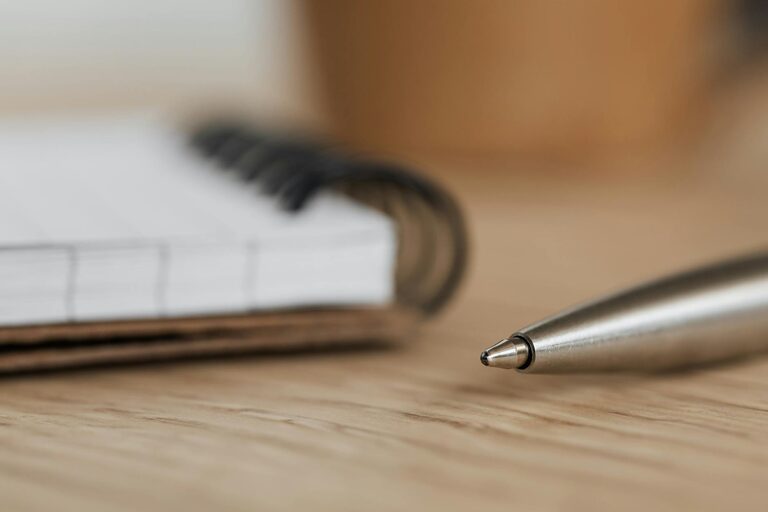Choosing the right notebook might seem like a small decision, but it can have a big impact on how often you use it and how effective it is for your needs. With so many options available—from lined to dotted pages, from compact sizes to large sketchbooks—selecting a notebook that you’ll actually enjoy using is key to staying organized, motivated, and creative.
In this guide, we’ll walk you through practical steps to choose a notebook that suits your lifestyle, preferences, and goals. Whether you want it for note-taking, journaling, planning, or creative work, these tips will help you make the best choice.
Understand Your Purpose
Before diving into features and designs, ask yourself what you primarily want to use your notebook for. This will influence the size, layout, and other characteristics.
– Note-taking: Are you a student or professional? You might prefer lined pages for easy writing.
– Journaling: If you like to write daily reflections or diary entries, a notebook with a soft cover and a pleasant feel can encourage regular use.
– Planning and task management: Dotted or grid pages often work well for bullet journals and trackers.
– Creative work: Sketchbooks or blank pages are ideal if you want to draw, doodle, or brainstorm visually.
Clearly identifying your primary use helps narrow down the best options.
Select the Right Size
Size matters both for convenience and comfort.
– Pocket-sized notebooks (A6 or smaller): Great for on-the-go jotting, quick notes, or ideas. Easy to carry but less space.
– Medium notebooks (A5): A popular choice for daily use; portable but with ample writing area.
– Large notebooks (A4 and above): Best for extensive notes, drawings, or in-depth planning but less portable.
Think about where and how you will use the notebook most. Will you carry it in a bag, keep it at your desk, or leave it at home? A notebook too big might discourage use; too small might not meet your needs.
Choose the Right Paper and Binding
Paper quality and notebook construction influence durability and writing experience.
Paper Type and Weight
– Thickness: Measured in GSM (grams per square meter), thicker paper (80-100 GSM or more) prevents ink bleed-through and feels sturdier.
– Texture: Smooth paper offers effortless writing, while textured paper might appeal to artists or those who prefer more tactile feedback.
– Color: White or cream-colored paper can be easier on the eyes, reducing glare.
Binding Style
– Spiral-bound: Allows the notebook to lie flat or be folded back, excellent for note-taking on the move.
– Sewn or stitched: Durable and can lie relatively flat, often found in high-quality notebooks.
– Glue-bound: Common and often less expensive but can be less durable and less flexible.
Evaluate your preferred writing instruments too. For example, fountain pen users often prefer thicker, smooth paper without feathering.
Consider Page Layout and Lines
Notebooks come with various page formats, each suited for different tasks.
– Lined pages: Best for writing essays, journal entries, or notes.
– Dotted grid: Versatile for bullet journaling, sketching, or planning with some structure but freedom.
– Blank pages: Ideal for creative projects, drawing, or freeform note-taking.
– Grid or squared pages: Useful for math, diagrams, or precise drawings.
Choosing a layout that matches your style helps keep your notes neat and your creativity flowing.
Think About Additional Features
Some notebooks offer extras that might enhance your experience.
– Page numbers: Helpful for referencing and organizing.
– Built-in index or table of contents: Essential for bullet journals or extensive note systems.
– Bookmarks or elastic closures: Keeps your place and protects pages.
– Pockets: For storing receipts, notes, or small papers.
– Perforated pages: Easy to tear out notes without damage.
Decide which features are must-haves and which are optional based on your needs.
Pick a Design You’ll Love
A notebook’s look and feel can motivate you to pick it up regularly.
– Choose a cover material and design that matches your personality—whether that’s minimalist, colorful, or artistic.
– Soft covers tend to be lightweight and flexible, while hard covers offer protection and durability.
– Personalized notebooks add a nice touch, especially as gifts or for special purposes.
Don’t underestimate how a visually appealing notebook can boost your enthusiasm.
Test Before You Commit
If possible, visit a stationery store and try writing in some notebooks. Check:
– How the paper feels under your favorite pen or pencil.
– Whether the notebook lies flat when open.
– How the size feels in your hands or bag.
If purchasing online, read reviews regarding paper quality and durability to avoid surprises.
Establish a Routine
Even the best notebook won’t be used regularly without a habit.
– Set a daily or weekly time to update or write in your notebook.
– Keep it visible or in a convenient spot.
– Pair it with a favorite pen or writing tool.
By combining a suitable notebook with consistent use, you’ll maximize its value.
Conclusion
Choosing a notebook you’ll actually use isn’t complicated if you focus on your needs and preferences. Consider your purpose, size, paper, binding, layout, features, and design. Test if possible. With the right match, your notebook can become a trusted companion for creativity, productivity, and reflection.
Remember, a great notebook isn’t just about looks—it’s about how it fits your life and inspires you to keep writing!



